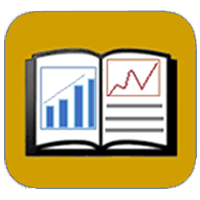Sage-grouse
View article.
Retrospective sensitivity analysis suggested the dynamics in populations growth rates were driven by increases in juvenile, adult, first nest, and yearling survival in the Treatment relative to the Control. These findings demonstrate the effectiveness of targeted conifer removal as a management strategy for conserving sage-grouse populations in sagebrush steppe affected by conifer expansion. Examples of positive, population-level responses to habitat management are exceptionally rare for terrestrial vertebrates, and this study provides promising evidence of active management that can be implemented to aid recovery of an imperiled species and biome.
View article.
Our results underscore the importance of active and comprehensive management actions immediately following wildfire (i.e., seeding coupled with planting sagebrush), that might offset short-term impacts of wildfire by timing rapid recovery of sagebrush to meet short-term species’ habitat requirements. Burned leks likely have substantial immediate impacts that may extend beyond wildfire boundaries, especially if critical source habitats are removed. Such impacts could fragment habitat and disrupt connectivity, thereby affecting larger populations and possibly contributing to more widespread declines in sage-grouse populations.
View abstracts.
These abstracts of recent papers on rangeland management in the West were prepared by Charlie Clements, Rangeland Scientist, USDA Agricultural Research Service, Reno, NV.
Webinar recording.
Working Lands for Wildlife – the Natural Resources Conservation Service’s premier approach for conserving America’s working lands to benefit people, wildlife and rural communities – is excited to share information on two, action-based frameworks for conservation. The frameworks are the result of a multi-state planning effort and lay the foundation for the first biome-scale approach to wildlife conservation on working rangelands in grassland and sagebrush biomes. These efforts build on past achievements of the Lesser Prairie-Chicken and Sage Grouse Initiatives that together have partnered with more than 3,200 ranchers and conserved 10.3 million acres of working rangelands. The framework approach is designed to increase conservation and restoration of rangelands by addressing major threats to rangeland health and through the implementation of conservation measures that limit soil disturbance, support sustainable grazing management, promote the strategic use of prescribed fire and support native grassland species. Together, the frameworks leverage the power of voluntary, win-win conservation solutions to benefit people and wildlife from the Mississippi River to the Pacific Ocean.
View report.
Incorporating spatial and temporal scales into greater sage-grouse (Centrocercus urophasianus) population monitoring strategies is challenging and rarely implemented. Sage-grouse populations experience fluctuations in abundance that lead to temporal oscillations, making trend estimation difficult. Accounting for stochasticity is critical to reliably estimate population trends and investigate variation related to deterministic factors on the landscape, which are amenable to management action. Here, we describe a novel, range-wide hierarchical monitoring framework for sage-grouse centered on four objectives: (1) create a standardized database of lek counts, (2) develop spatial population structures by clustering leks, (3) estimate spatial trends at different temporal extents based on abundance nadirs (troughs), and (4) develop a targeted annual warning system to help inform management decisions. Using automated and repeatable methods (software), we compiled a lek database (as of 2019) that contained 262,744 counts and 8,421 unique lek locations from disparate state data. The hierarchical population units (clusters) included 13 nested levels, identifying biologically relevant units and population structure that minimized inter-cluster sage-grouse movements. With these products, we identified spatiotemporal variation in trends in population abundance using Bayesian state-space models. We estimated 37.0, 65.2, and 80.7-percent declines in abundance range-wide during short (17 years), medium (33 years), and long (53 years) temporal scales, respectively. However, some areas exhibited evidence of increasing trends in abundance in recent decades. Models predicted 12.3, 19.2, and 29.6 percent of populations (defined as clusters of neighboring leks) consisted of over 50-percent probability of extirpation at 19, 38, and 56-year projections from 2019, respectively, based on averaged annual rate of change in apparent abundance across two, four, and six oscillations (average period of oscillation is 9.4 years). At the lek level, models predicted 45.7, 60.1, and 78.0 percent of leks with over 50-percent extirpation probabilities over the same time periods, respectively, mostly located on the periphery of the species’ range. The targeted annual warning system automates annual identification of local populations exhibiting asynchronous decline relative to regional population patterns using simulated management actions and an optimization algorithm for evaluating range-wide stabilization of population abundance. In 2019, approximately 3.2 percent of leks and 2.0 percent of populations were identified by the targeted annual warning system for management intervention range-wide.
Access report. Watch the webinar.
The sagebrush (Artemisia spp.) biome, its wildlife, and the services and benefits it provides people and local communities are at risk. Development in the sagebrush biome, for many purposes, has resulted in multiple and often cumulative negative impacts. These impacts, ranging from simple habitat loss to complex, interactive changes in ecosystem function, continue to accelerate even as the need grows for the resources provided by this biome. This “Sagebrush Conservation Strategy—Challenges to Sagebrush Conservation,” is an overview and assessment of the challenges facing land managers and landowners in conserving sagebrush ecosystems. This strategy is intended to provide guidance so that the unparalleled collaborative efforts to conserve the iconic greater sage-grouse (Centrocercus urophasianus) by State and Federal agencies, Tribes, academia, nongovernmental organizations, and stakeholders can be expanded to the entire sagebrush biome to benefit the people and wildlife that depend on this ecosystem. This report is organized into 3 parts.
“Part I. Importance of the Sagebrush Biome to People and Wildlife” introduces the biome and a subset of the more than 350 species of plants and animals associated with sagebrush for which there is some level of conservation concern. These include several sagebrush obligates that have been petitioned for listing under the Endangered Species Act of 1973 (16 U.S.C. 1531 et seq.), including greater sage-grouse, Gunnison sage-grouse (C. minimus; listed as threatened), and pygmy rabbit (Brachylagus idahoensis). Other sagebrush-dependent species, such as pronghorn (Antilocapra americana) and mule deer (Odocoileus hemionus), have experienced significant population declines.
“Part II. Change Agents in the Sagebrush Biome—Extent, Impacts, and Effort to Address Them” is an overview of the variety of change agents that are causing the continued loss and degradation of sagebrush. Topics covered include altered fire regimes, invasive plant species, conifer expansion, overabundant free-roaming equids, and human land uses, including energy development, cropland conversion, infrastructure, and improper livestock grazing. Climate changes, including warmer temperatures and altered amounts and timing of precipitation, have and will likely increasingly compound negative effects to sagebrush ecosystems from all these threats.
“Part III. Current Conservation Paradigm and Other Conservation Needs for Sagebrush” begins with an overview of how sage-grouse conservation, and the associated efforts and collaborations, may be able to address threats to and restoring degraded sagebrush and habitat for other sagebrush-dependent and -associated species. Meeting conservation goals for sage-grouse, mule deer, pygmy rabbits, and other sagebrush-associated wildlife will require extensive restoration of sagebrush communities already converted or degraded by the change agents outlined in Part II of this report. Concepts, considerations, techniques for restoration, and adaptive management and monitoring are discussed to help set the stage for potential strategies to improve conditions throughout the sagebrush biome. Communication, outreach, and engagement can enhance grassroots conservation efforts and build the next generation of managers, practitioners, scientists, and communicators who will care for the sagebrush ecosystem and stimulate or sustain public participation in sagebrush conservation issues.
This study quantified seasonal second‐order habitat selection for sage‐grouse across the state of Utah to produce spatio‐temporal predictions of their distribution at the southern periphery of the species range. We used location data obtained from sage‐grouse marked with very‐high‐frequency radio‐transmitters and lek location data collected between 1998 and 2013 to quantify species habitat selection in relation to a suite of topographic, edaphic, climatic, and anthropogenic variables using random forest algorithms. Sage‐grouse selected for greater sagebrush (Artemisia spp.) cover, higher elevations, and gentler slopes and avoided lower precipitations and higher temperatures. The strength of responses to habitat variables varied across seasons. Anthropogenic variables previously reported as affecting their range‐wide distribution (i.e., roads, powerlines, communication towers, and agricultural development) were not ranked as top predictors at our focal scale. Other than strong selection for sagebrush cover, the responses we observed differed from what has been reported at the range‐wide scale. These differences likely reflect the unique climatic, geographic, and topographic context found in the southern peripheral area of the species distribution compared to range‐wide environmental gradients. Our results highlight the importance of considering appropriateness of scale when planning conservation actions for wide‐ranging species.
Pygmy rabbits, greater sage grouse, songbirds, and Umtanum desert buckwheat…oh my! Learn how fire and land management can impact key threatened and endangered species and the top three things to take into consideration before taking action where these species call sage brush their home.
View recorded symposium.
The 2021 WAFWA mid-winter meeting will be held virtually.
The greater sage-grouse (Centrocercus urophasianus; hereafter GRSG) has been a focus of scientific investigation and management action for the past two decades. The 2015 U.S. Fish and Wildlife Service listing determination of “not warranted” was in part due to a large-scale collaborative effort to develop strategies to conserve GRSG populations and their habitat and to reduce threats to both. New scientific information augments existing knowledge and can help inform updates or modifications to existing plans for managing GRSG and sagebrush ecosystems. However, the sheer number of scientific publications can be a challenge for managers tasked with evaluating and determining the need for potential updates to existing planning documents. To assist in this process, the U.S. Geological Survey (USGS) has reviewed and summarized the scientific literature published since January 1, 2015. The first GRSG literature summary was published early in 2018. Here we provide an update to that document by adding summaries of articles published between January 6, 2018 and October 2, 2019.







